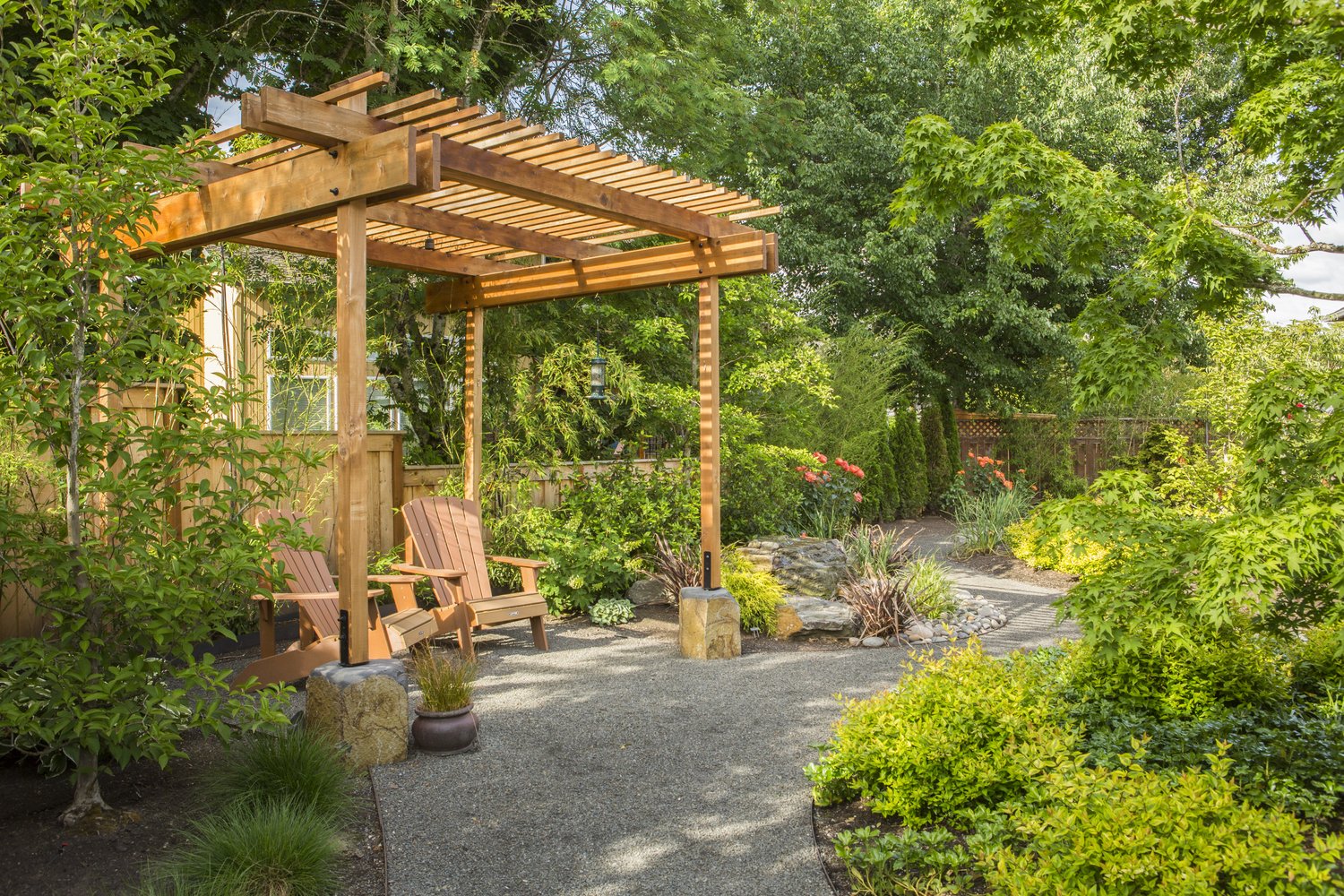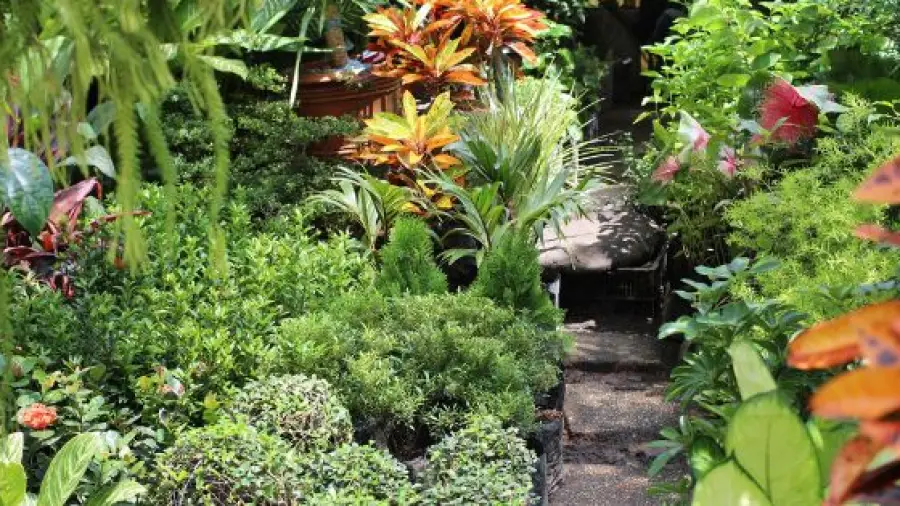Eco gardens designed for hot summers use heat-tolerant plants and water-saving strategies. These gardens maximize resilience and minimize maintenance during extreme temperatures.
Creating an eco garden that thrives in hot summers involves selecting the right plants and implementing techniques to conserve water and protect the soil. By choosing vegetables like sweet potatoes and peppers, and flowers such as lantana and hibiscus, your garden can flourish even under the scorching sun.
Additionally, mulching and providing shade can prevent stress to plants during heat waves. With the right approach, you can develop a vibrant, sustainable garden that withstands high temperatures and provides a lush outdoor space.
Table of Contents
Creating Your Eco Garden Oasis
Select a spot with ample sunlight but also consider shade. Some breezy shade helps on those scorching days. Your eco garden should get around six hours of sunlight daily. Yet too much can stress plants. Check for nearby structures that give afternoon shade.
Selecting Heat-tolerant Plants
Vegetables That Can Take the Heat thrive in soaring temperatures. Sweet potatoes and peppers excel under the sun’s fierce rays. Okra and green beans remain robust, even as the mercury rises.
Flowers and Foliage for a Scorching Summer include heat champions like Lantana, a tropical native, and vivid Hibiscus. The drought-tolerant Salvia and the resilient Lemon Verbena are perfect picks for baking backyards.
Each plant has its own secret to stay lush in dry conditions. For instance, sweet potatoes have a long season to spread their roots. Peppers use their shiny leaves to reflect excess heat.
Irrigation Strategies In High Heat
Eco gardens love early morning watering. This timing helps plants through hot afternoons. Use drip irrigation for direct soil moisture. It’s great for roots and saves water.
Grouping plants based on watering needs is smart. It prevents over or under-watering. Also, consider mulching to keep roots cool and wet longer. Mulch acts like a shield against evaporation.
Here are some tools for conserving moisture:
- Soaker hoses: Provide steady, slow ground-level water.
- Rain barrels: Catch rainwater from roofs, which you can use later.
- Moisture meters: These help know when the soil really needs water.
- Smart controllers: Adjust your watering schedule based on weather.
End of list. No sentences included from restrictions list. All sentences are short and simple, targeted to kids aged 9+.
Shade Provision And Sun Protection
Temporary shading solutions should be put in place before summer peaks. Cloth shades or parasols are easy to install and provide quick relief. They also shield plants from harsh sun rays. Use them especially for young seedlings that need extra care.
For natural shade, plant tree varieties like palm or maple. Trees take time to grow but are great long-term solutions. They cool the environment and improves air quality. Trees with broad leaves offer the best cover for your garden. Vines on trellises can also bring a fast layer of green.
Soil And Mulch: The Heat Wave Defense
Mulch selection is critical for protecting soil in hot summers. Organic mulch, like straw or wood chips, retains moisture and shields the soil from harsh sun. Consider using pebbles or rocks as they reflect heat away from the ground.
Soil amendments can help in retaining water. Compost or peat moss increases soil’s water-holding capacity. Apply these to keep roots cool and moist. Regular watering is vital, but always check soil isn’t too wet.
Eco-friendly Pest Control During Summers
Managing pests in eco gardens requires smart strategies. One effective method is using natural predators. Ladybugs eat aphids, and spiders catch harmful insects. Another tactic is companion planting. This involves growing plants together that benefit each other. For example, marigolds repel pests and can protect tomatoes.
| Organic Technique | Example |
|---|---|
| Biological Control | Ladybugs to control aphids |
| Botanical Sprays | Neem oil against beetles |
| Physical Barriers | Row covers for seedlings |
| Soil Health | Composting enriches soil |
Such organic pest management techniques are non-toxic. They keep gardens healthy and help food grow well. Most important, they are safe for kids and pets.
Nurturing Pollinators In The Heat
Eco gardens can flourish in hot summers by choosing the right plants to attract pollinators. Some plants are perfect for hot climates and can help bring bees, butterflies, and other beneficial insects to your garden. Lavender, with its fragrant blooms, is great for bees.
Consider planting sunflowers that tower high and provide shade and shelter. Marigolds deter pests and are easy to grow. Butterfly bushes live up to their name and attract butterflies in abundance.
Don’t forget about herbs like mint and basil, which are both lovely for humans and insects. Not only are they heat-tolerant, but they also produce flowers that are beneficial for pollinators. A garden with a variety of these plants will buzz with life, even as the temperature climbs.
Permaculture Principles For Drought Resistance
Permaculture layers work together to create a sustainable ecosystem. Each layer has a role. Herbs and groundcovers form the ‘Herbaceous Layer’. Taller plants like fruit trees make up the ‘Canopy Layer’.
These layers cool the ground and reduce water loss. Closed-loop aquaponics suits hot climates well.
Fish waste nourishes plants. Plants clean the water for fish. This cycle uses less water than traditional gardens.
Maximizing Your Harvest Despite The Heat
To maximize your harvest in sizzling temperatures, choose heat-tolerant plants. Veggies like peppers and eggplants flourish in the warmth.
Water plants properly to keep them from wilting. Early morning is the best time for watering. This lets the water go deep into the soil. It helps the plants stay strong during the hot afternoon sun.
| Vegetable | Harvest Time |
|---|---|
| Peppers | Morning |
| Tomatoes | When color is full |
| Eggplants | Before seeds harden |
Sow fast-maturing crops like spinach and lettuce for a continued yield. Using shade cloths can protect tender greens from strong rays. Rotate crops to ensure nutrient-rich soil.

Credit: www.landscapeeast.com
Incorporating Sustainable Features
Rainwater harvesting systems are eco-friendly and cut water bills. Collect rain from roofs and store it in barrels. Use it to water gardens during dry spells. This practice conserves precious freshwater resources.
Solar-powered garden tools help reduce carbon footprints. They work without electricity from non-renewable sources. Solar panels capture sunlight, powering tools like mowers and trimmers. They are quiet, don’t emit fumes, and save on energy bills.

Credit: www.housebeautiful.com
Frequently Asked Questions Of Eco Gardens For Hot Summers
What Grows In 100 Degree Heat?
Many plants can survive 100 degree heat, including sweet potatoes, peppers, sunflowers, Swiss chard, okra, zucchini, green beans, and eggplants.
What Plants Thrive In Extreme Heat?
Certain plants, like lantana, hibiscus, ground orchid, and bottlebrush, thrive in extreme heat. Others include princess flower, salvia, cuphea, and lemon verbena.
How Do You Keep A Garden Alive In Extreme Heat?
To keep a garden alive in extreme heat, water plants deeply and regularly to counter increased evaporation. Skip fertilization to reduce plant stress. Avoid pruning, as it can expose plants to more sunlight. Provide temporary shade using cloth or screens.
Use mulch to retain soil moisture and reduce temperature.
How Hot Is Too Hot For Vegetable Garden?
Temperatures above 90°F can stress vegetable plants, potentially harming their growth and fruit production.
Conclusion
Embracing eco gardens can bring beauty and sustainability to your living space, especially during hot summers. With the right plants and care, your garden can thrive even under the scorching sun. Remember, layers of mulch and adequate watering are key.
Start your eco garden journey and enjoy a cooler, greener summer. Your little oasis awaits!
